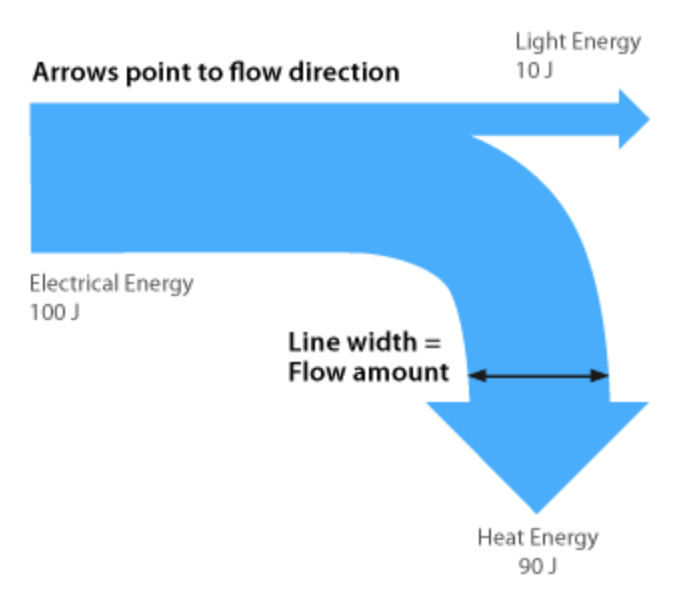Objectives:
- To understand that the energy efficiency for any energy transfer can be calculated using the equation:
- Efficiency may also be calculated using the equation:
- You should be able to describe ways to increase the efficiency of an intended energy transfer.
Power is incredibly important to us as we need it to power our electronic devices, cars, homes, even our own bodies! Take a sporting event for example, if you want to throw a javelin further than your competitor, only two things are of importance – the angle and the power. If you both throw it with the same angle then the person with the greatest power transfers the greatest amount of energy to the javelin per second and therefore will make it speed up the most and make it travel furthest!
 If you want to make an object more efficient, giving it more power is not always the best way, you could instead try making it more efficient. By decreasing the total input power, but still getting the same output power, the efficiency improves.
If you want to make an object more efficient, giving it more power is not always the best way, you could instead try making it more efficient. By decreasing the total input power, but still getting the same output power, the efficiency improves.
In fact the equation for efficiency involving energy is:
Using the equation for power (as stated above) but rearranging for Energy gives: . we can substitute this into the equation for efficiency to get:
Which reduces to give:
– – – – – – – – – – – – – – – – – – – – – – – –
Determining the Efficiency of a motor
In order to determine the efficiency of an object, you need to be able to measure the amount of energy you are putting in as well as the amount of energy you get out of the system. If you want to determine the efficiency of a Bunsen Burner heating up a beaker of water for example, it is very difficult because it would be a struggle to determine how much gas is used.
So, by using a motor we can determine the electrical energy input into the system. If the motor is used to lift an object through a certain height, we can measure the new gravitational potential energy of the system. To sum up… we can measure the energy input and output using this example.
The electrical energy input can be determine if we connect a voltmeter and ammeter up to the motor. Using the following equation we can then work out the power:
If the motor is on for a specific amount of time, which we can record using a stopwatch, the energy input can be measured by using:
This rearranged for work done gives us:
The first two equations can actually be combined to give us on equation to calculate the energy input:
To determine the efficiency of the motor we now need to determine the useful energy we obtain from the motor. In this case, the purpose of the motor was to raise the mass up through a certain height – work was done against gravity! This means the object gained useful energy in the form of gravitational potential energy, the equation for which is:
We now have methods to calculate the input and output energies, these can be substituted into the energy efficiency equation to give:
Where might the non-useful energy go?
In most systems, there is wasted energy which normally dissipates in the form of height and sound.
we can use Sankey Diagrams to help us to visualise how efficient an object is, here is an examples of one for a light bulb that is only efficiency:
Want a quick summary… watch this next YouTube clip:



You must be logged in to post a comment.